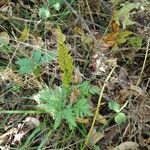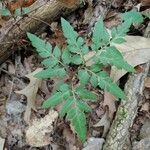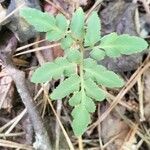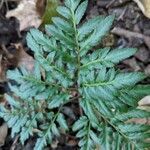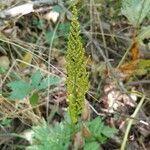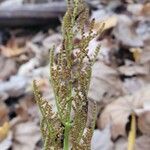Trophophore stalk 3--15 cm, 1.5--2.5 times length of trophophore rachis; blade shiny green, often bronze in winter, plane to convex, 3--4-pinnate, to 20 × 30cm, leathery. Pinnae to 10 pairs, approximate to remote, slightly ascending, distance between 1st and 2d pinnae not or slightly more than between 2d and 3d pairs, undivided except in proximal 2/3--3/4. Pinnules usually obliquely angular--trowel-shaped to widely trowel-shaped to obliquely round-lanceolate to ovate and pointed, margins denticulate to lacerate to coarsely cut halfway or wholly into linear-divergent segments in some populations, venation pinnate. Sporophores 2--3-pinnate, 1.5--2.5 times length of trophophore. 2 n =90.
